From the development of red LED in the early 60’s to the blue LED in the early 90’s, there had been tremendous amount of progress in LED’s developments providing numerous innovations in both the lighting and the display markets.
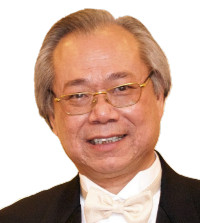
What prompted such developments is the excitation of yellow phosphor with the GaN blue LED, producing “white” light with high efficiency and long life.
The electrical to light conversion efficiency of a LED light bulb is about 5 times that of the equivalent incandescent lamp, which was invented by Thomas Edison over 100 years ago, in 1879. Within a decade of the development of white light LEDs, incandescent light bulbs have been almost totally replaced by LED light bulbs. The price of LED light bulbs has decreased very rapidly in the last couple of years, from close to $100 each to less than $5 each. I started to use LED light bulbs exclusively at home and recently, I trashed all the incandescent light bulbs I bought that I had not used in the last so many years.
One issue with the standard white light LEDs is that the phosphor is embedded in low thermal conductive resin, which causes brightness decay and color shifting due to thermal quenching of the phosphor. These effects are more pronounced when blue lasers are used for exciting the phosphor with a small focused spot for high brightness applications. To minimise the heating issues, most laser phosphor application designs use a rotating wheel coated with phosphor such that the heat is created and dissipated over a much larger area.
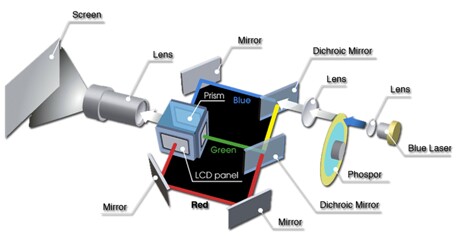
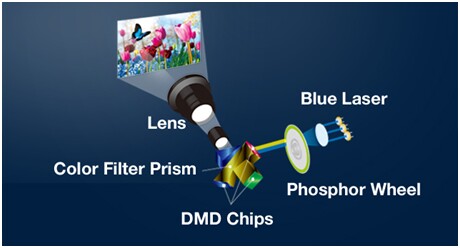
To overcome such problems, various methods of embedding phosphor inside non-resin materials have been developed such that the thermal conductivities of the embedding material are higher than resins, thus increasing the rate of heat removal and running the phosphor at a much lower temperature. Such non-resin based phosphor “materials” are usually called phosphor plates. There are many types of phosphors, ceramics, and glass materials used in various studies with complicated chemical symbols such as YAG:Ce3+, BaMgAl10O17:Eu2+, etc. None of these symbols will be mentioned in this article so as not to scare off readers like me! At this time, there are generally five different types distinguished by the fabrication methodologies.
Phosphor Ceramic Plate (PCP) – This technology is a thin, transparent ceramic produced by sintering the materials at high temperature. PCP, also commonly called ceramic phosphor, has been commercialized by Philips/Lumileds and Osram. To fabricate such ceramic phosphor, temperatures as high as 1,780°C is required and the process needs to be performed in vacuum for about 20 hours.
Phosphor Glass Plate (PGP) – PGP is formed by sintering a co-precipitated phosphor in a vacuum, or a composition for forming a phosphor phase at high pressure and is a translucent glass plate with microcrystalline phosphor particles dispersed inside the glass. Both are fabricated at high temperature.
Glass Phosphor Plate (GPP) – This is a glass material containing fluorescent phosphor crystallized using heat treatment. As a result, the glass itself serves as the phosphor, with active rare earth ions and transition metals. Although the fabrication of this material is relatively simple, the efficiency is very low and the excitation light source is usually UV, making a standard blue InGaN-based light source unsuitable.
Single-Crystal Phosphor Plate (SCPP) – This is a crystalline material prepared using the Czochralski process, which is a method of crystal growth used to obtain single crystals of semiconductors (e.g. silicon, germanium and gallium arsenide), metals (e.g. palladium, platinum, silver, gold), salts and synthetic gemstones. It has the advantages of compatibility with standard optical polishing, slicing, etc., such that various shapes can be made readily. On the other hand, this is the most difficult method of all, but has the “goodness” of a crystalline structure with high brightness and high efficiency. With sufficient advancements in the fabrication and with much reduced defects so that the absorption loss is very small, it could potentially be a base material for making lasers.
Phosphor in Glass (PiG) – This is probably the most common material in the non-resin category and is sometimes classified generally as ‘glass phosphor’. It is prepared by melting and annealing the glass material with microcrystalline phosphor particles dispersed inside the glass material at atmospheric pressure with a temperature of less than 800°C. In contrast to other types of glass/ceramic phosphor, which require high pressure and high temperature in the order of 1,200°C or more. Since the PiG process is relatively simple, it can be commercialized quite easily with high volume and low cost. In addition, PiG can be fabricated with various shapes and the color coordinates can be controlled by modifying the thickness of various layers, each of different ratios of phosphors. As a result, PiG has a high potential to be the future of “glass phosphor” and may be used in various applications.
The following table summarizes the major parameters of the different types of phosphor plates.
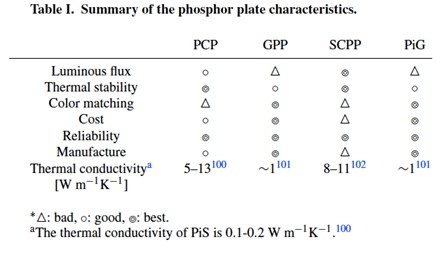
A paper published through a joint project in Taiwan between a university and a company showed some very exceptional PiG material, targeting laser excitation applications in which the light source has a small etendue and high intensity. In this study, a new, highly reliable, glass-based color wheel for high power laser excitation was reported that has very small degradation as compared to standard resin-based color wheels, over a period of 2,000 hours. The highly reliable glass-based color wheel under high power laser excitation is essential to the development of the future Laser Light Engine for high power projection applications. The following diagram shows Figure 1 from the paper, showing that after 2,000 hours, the resin-based color wheel shows clear signs of “burning”. In contrast, PiG color wheel does not show any visible changes.

The next diagram is Figure 4 from the paper, and showing the measured results of the relative loss in output with two excitation powers of 5-W and 30-W, for both the resin-based and glass-based phosphors. At 30W, the resin-based phosphor wheel exhibited about 45% in lumen loss, which essentially means that it failed in operation. On the other hand, the glass-based phosphor wheel only exhibited 3.3% in lumen loss. This is due to the fact that the glass transition temperature of 570°C was much higher than the resin transition temperature of 150°C.
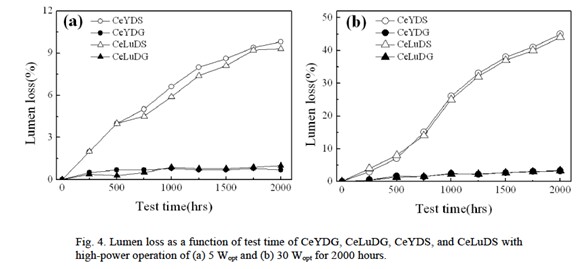
With a 30 W blue laser output power and with a phosphor efficiency of 300 lumens/W, the total visible output is estimated to be 9,000 lumens, which is equivalent to the output of a 150 W UHP lamp. In this case, the electrical input to the laser, which is about five times the optical output, is 150 W, which is the same as the UHP lamp. The longer life time of the laser phosphor system has meant that that it will, eventually, replace almost all the UHP lamps in lower power projector systems.
As the cost of of lasers has become more competitive and phosphor power handling capacity has improved, higher power projectors are being designed with various proprietary coupling and heat sinking methodologies. For example, Barco has produced output as high as “32,000 center lumens” using “inorganic phosphor wheel” in its UDX-W32, WUXGA 3-chip DLP digital projector, which uses thre 0.96” DMD imagers. – Ken Li
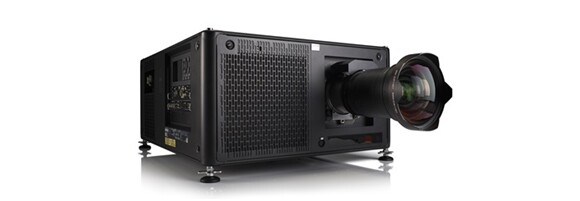
Any questions or comments can be directed to the author by email: [email protected]

